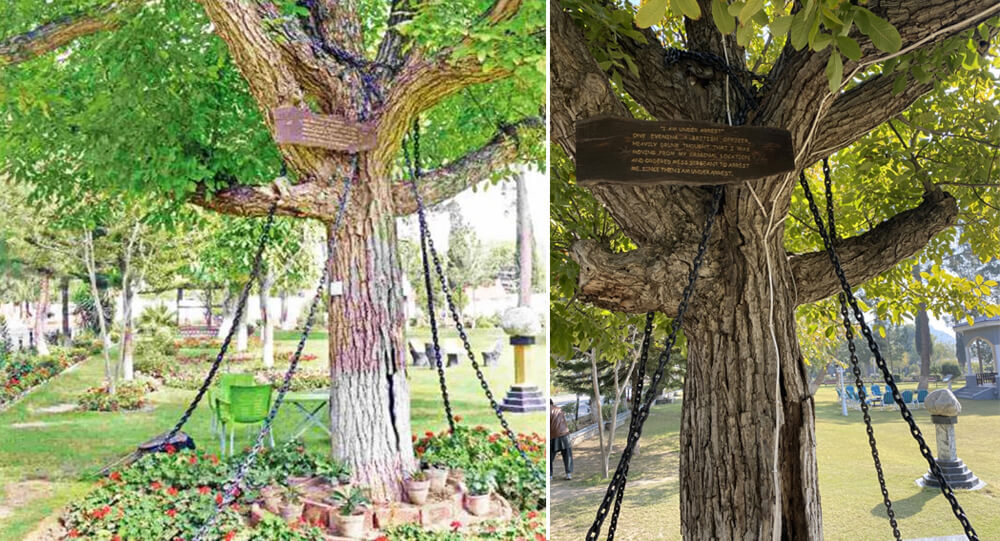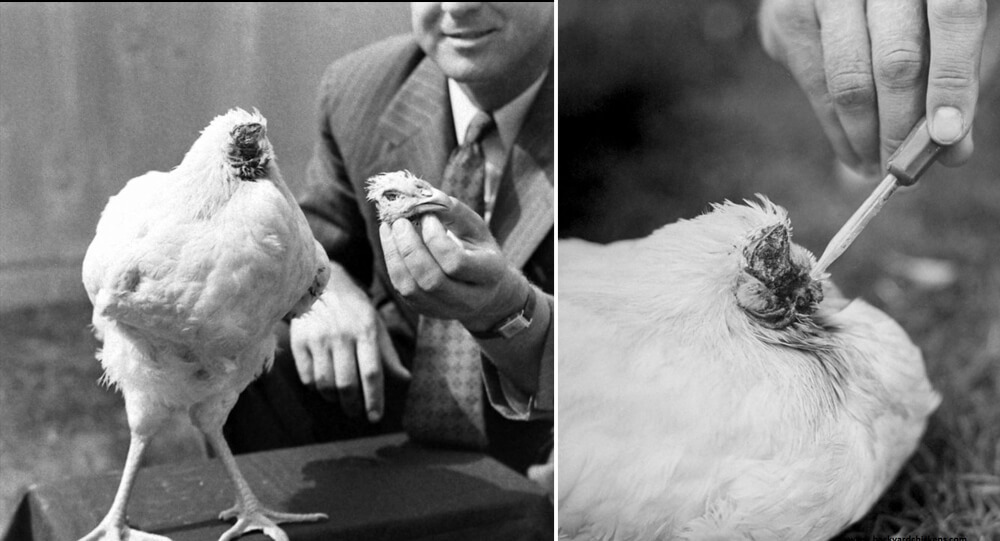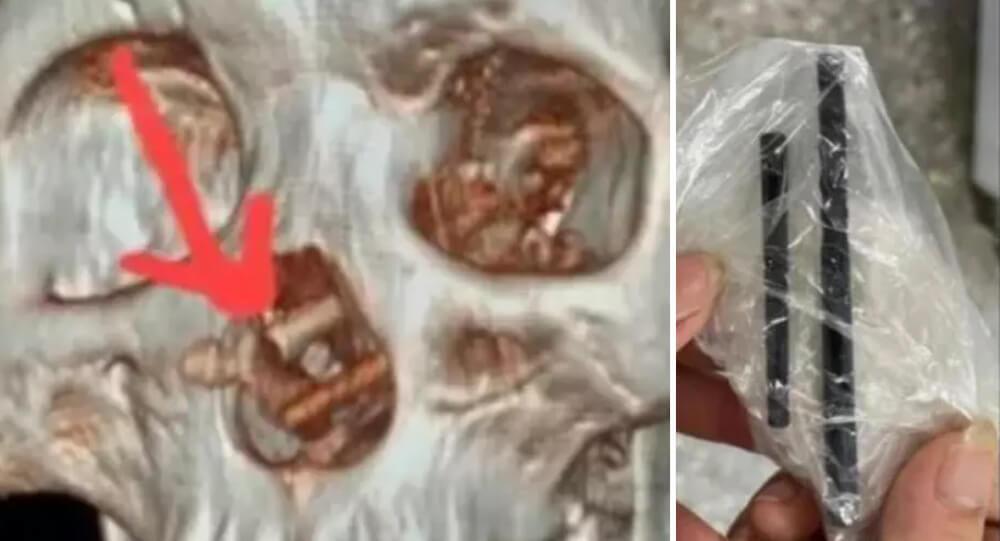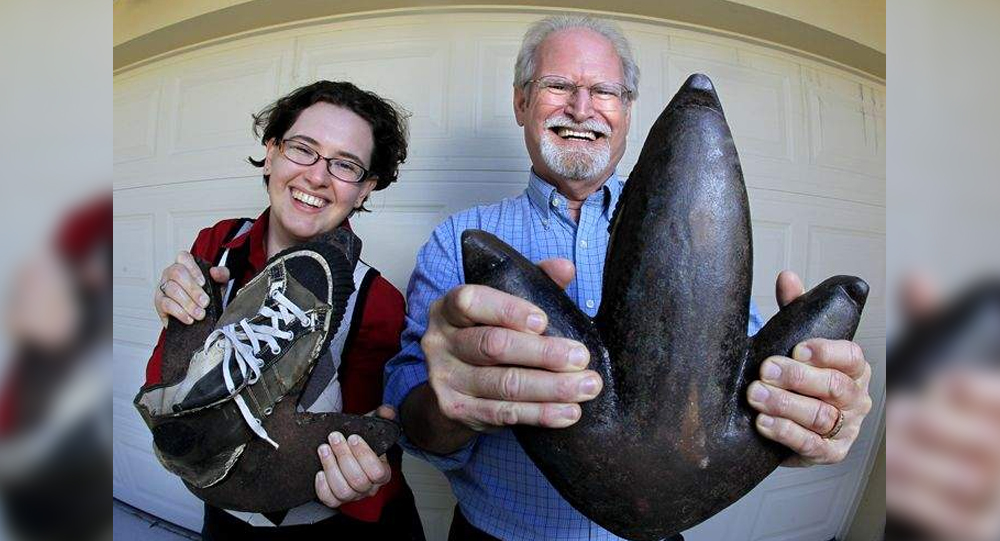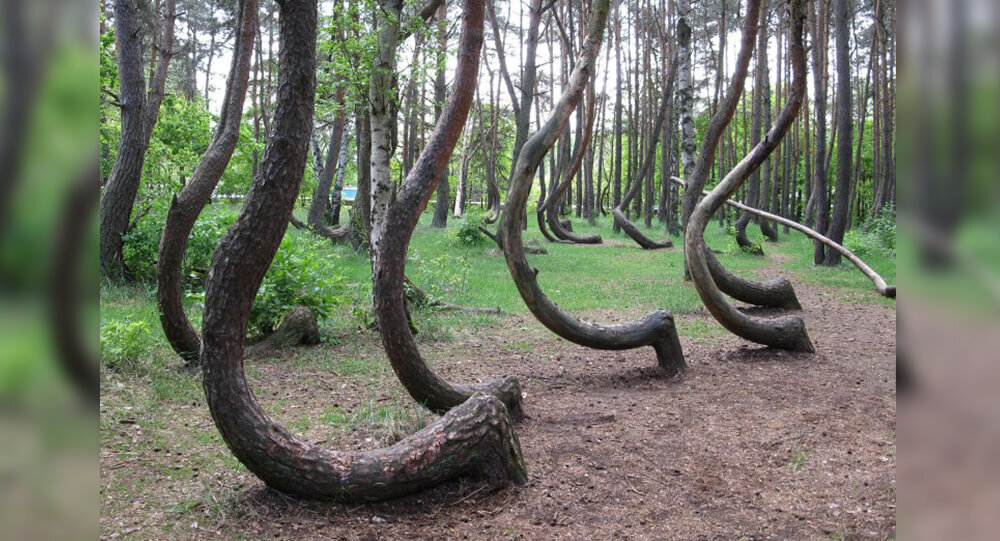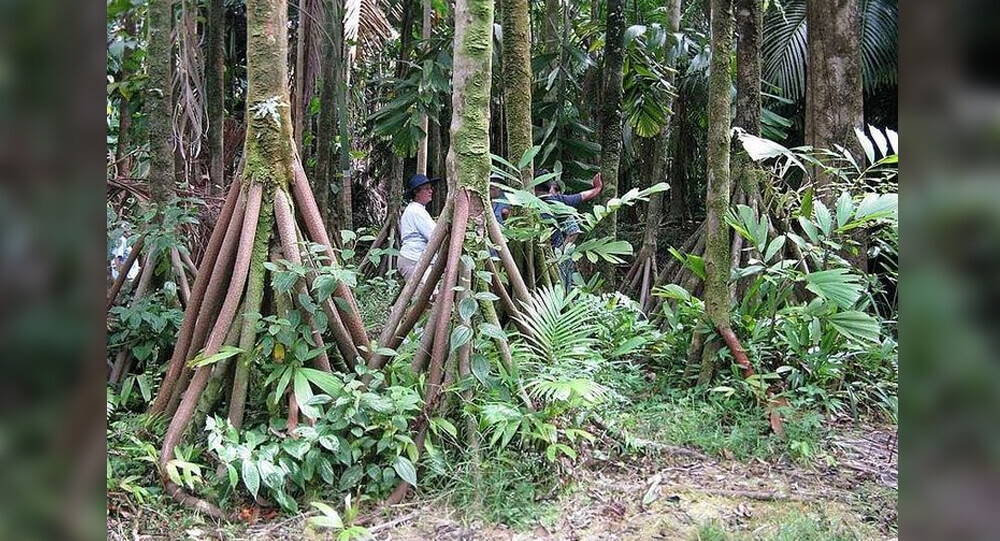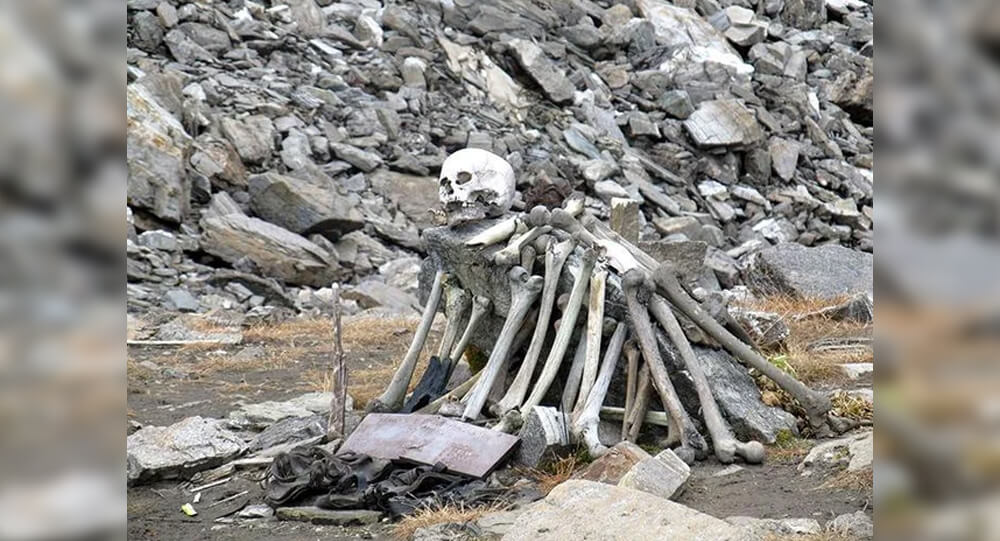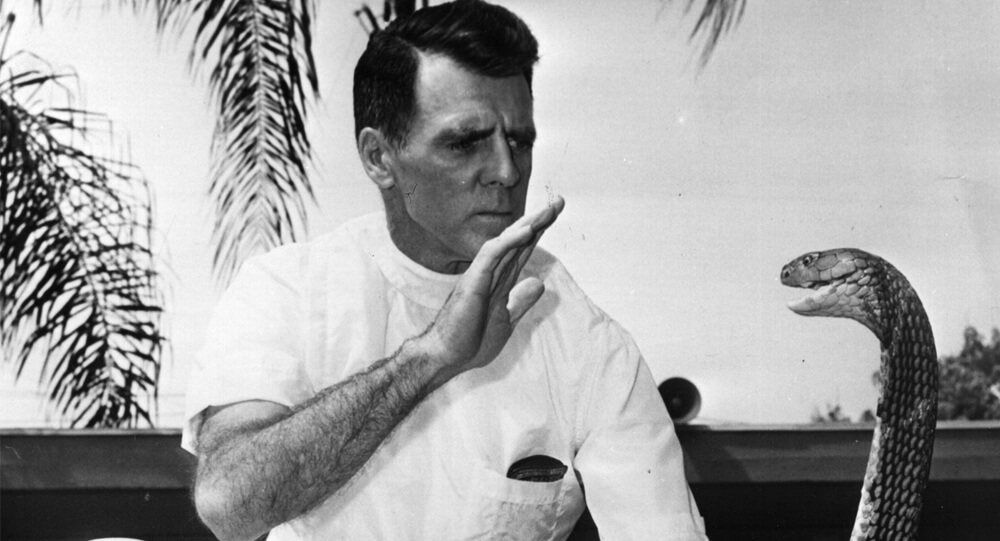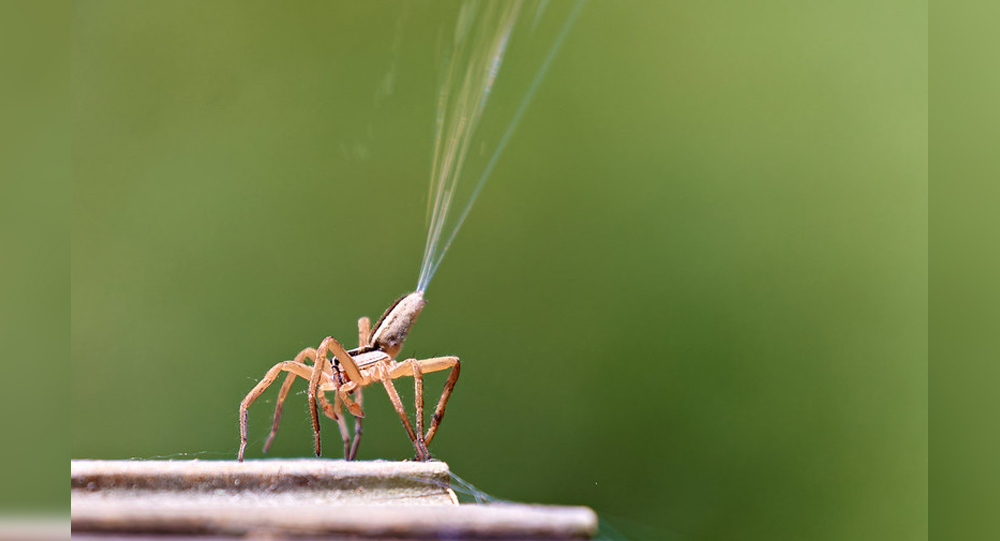

Why Do Spiders Rain From the Sky? The Strange Ballooning Phenomenon
Photo by: Steve Creek Wildlife Photography
Ballooning is a remarkable dispersal method used primarily by spiderlings shortly after hatching but also by some adult spiders. These tiny arachnids climb to elevated points—twig tips, tall grasses, roof edges—and adopt a characteristic “tiptoe” posture, raising their abdomens high in the air. From their spinnerets, they release fine silk threads that spread out and catch the air.
These threads, often too thin to be seen in sunlight, act as a natural parachute or sail. When the conditions are right, the silk can lift even tiny spiders off the ground, carrying them into the atmosphere on air currents.
This behavior helps spiders spread over large areas, avoiding overcrowding and inbreeding, and finding new habitats with better resources and fewer predators.
The Stunning Science of Spider Ballooning
For decades, scientists understood that ballooning was primarily powered by wind updrafts—rising warm air currents that can carry particles and small creatures upward. However, a breakthrough study in 2018 revealed an astonishing additional factor: spiders can also harness Earth’s static electric field to lift off.
The Earth’s surface carries a negative charge, while the atmosphere above has a positive charge, creating an electric field that produces an upward force. Spiders’ silk is charged positively when released, making the threads repel from the negatively charged ground. This repulsion provides enough lift to raise spiders even when the wind is calm.
This explains numerous anecdotal reports of spiders ballooning on still days or when winds are too light to support flight, an earlier scientific mystery solved.

How Far Can Spiders Travel by Ballooning?
Spider ballooning is not a short hop—it can be a journey of hundreds or even thousands of kilometers. Scientists have collected tiny spiders from over five kilometers up in the atmosphere, and even from ships in the open ocean far from coastlines.
These airborne travels are a key factor in how spiders colonize new areas and repopulate ecosystems. They can “fly” across islands, mountain ranges, and large empty spaces that would otherwise be impassable.
Such journeys are risky, however—many spiderlings perish in flight due to predators, weather, or landing in inhospitable environments. But nature’s strategy favors the few that survive, ensuring genetic diversity and species spread.
A Delicate Dance With the Wind
Before releasing their silk threads, spiders carefully evaluate environmental conditions. They sense wind speed and direction using specialized hairs on their front legs, patiently waiting for optimal moments to launch.
If conditions are unfavorable—too windy, too still, or too turbulent—they retract the silk and wait patiently. When conditions are just right, the spider releases dozens of nanoscale silk fibers that combine to form a triangular-shaped sheet. The sheet catches wind or electric forces and generates drag large enough to overcome the spider’s weight.
Once airborne, spiders stretch their legs outward, stabilizing flight and steering gently on air currents to direct their landings.
The Phenomenon of ‘Spider Rains’
Ballooning on a massive scale can create the phenomenon of “spider rains,” where thousands or millions of tiny spiderlings descend en masse over an area. Such events have been recorded in Australia, South America, and even southern U.S. states.
The silk threads can weave a delicate, snow-like canopy visible in sunlight, seemingly draping across trees, fields, and roads. Though unsettling to some, these spider “showers” are natural, harmless, and part of the ecosystems’ reproductive strategies.
In Australia’s 2012 and 2015 events, millions of spiders ballooned simultaneously, with roads and fields covered in a fine web mist—a stunning testament to spider abundance and dispersal.
Why Ballooning Is Ecologically Important
Ballooning facilitates genetic exchange between distant populations, preventing inbreeding and promoting species diversity. It also allows spiders to adapt to changing environments and colonize new areas faster than crawling or jumping could achieve.
As natural pest controllers, dispersed spiders contribute to agriculture and ecosystems by controlling insect populations. Ballooning indirectly supports these benefits by expanding spider territories and improving species resilience.
Fascinating Trivia About Spider Ballooning
- Spiders can balloon at wind speeds less than 3 meters per second, preferring light breezes.
- Ballooning behavior has been observed in at least 31 spider species and even in some moths and mites.
- Spider silk used in ballooning differs chemically and structurally from web silk, optimized for flight.
- Ballooning emerged as a dispersal strategy during the Cretaceous period, over 100 million years ago.
- Spiders can produce up to 50 nylon-like silk fibers simultaneously for ballooning, creating a strong, lightweight sheet.
- Ballooning spiders can reach altitudes as high as 5 kilometers (3 miles), detected by researchers and aircraft.
- Spiders have shown the ability to “choose” when to balloon based on atmospheric electric fields as well as wind.
- Ballooning is an energy-efficient way for spiders to move without expending much effort.
Challenges and Future Research in Spider Ballooning
Scientists still seek to fully understand the balance of forces—wind, turbulence, electric fields—that control ballooning efficiency and risk. Questions remain about how spiders control direction and avoid hazards.
Ongoing research involves wind tunnel experiments, high-speed photography, and atmospheric measurements. The behavior also inspires biomimetic engineering—designing tiny flying drones and sensors based on spider ballooning principles for scientific and environmental monitoring.
Nature’s Tiny Sky Travelers
The phenomenon of spiders raining from the sky is an enchanting reminder of nature’s ingenuity and the wonders hidden in everyday life. Ballooning is a remarkable adaptation that allows these tiny arachnids to traverse continents and oceans, riding silk threads on invisible forces.
Understanding ballooning enriches appreciation for these often misunderstood creatures and deepens human connection with the natural world’s subtle dynamics.
If this story of skyborne spiders illuminated hidden natural marvels, share this article to reveal the mystery behind one of the most unusual forms of animal flight.
Sources & Further Reading:
- National Center for Biotechnology Information (NCBI): Study on Ballooning in Large Spiders (2018)
- Wikipedia: Ballooning (spider) (2006)
- IFLScience: The Science Behind Spider Ballooning (2023)
- PBS NewsHour: Spiders Fly on Currents of Earth’s Electric Field (2018)

Khuk Khi Kai: Thailand’s Infamous “Chicken Poop Prison” and Its Gruesome Legacy
Thailand used to have a prison called "Khuk Khi Kai," or "Chicken poop prison." The first floor of the prison contained prisoners, and the second floor was a large chicken coop. The grated floor ensured that prisoners were constantly subjected to chicken poop.

In Pakistan, this banyan tree has been arrested since 1898
In Pakistan, a tree has been arrested and chained since 1898. When a British officer who was drunk assumed it was leaving its place, it was arrested. The tree, which is presently located on the grounds of the Pakistan Army's Landi Kotal cantonment, continues to attract visitors and locals everywhere.

Brazilian gang leader attempts to escape from Rio de Janeiro prison by dressing up as his daughter
In 2019, a Brazilian gang leader tried to escape from prison by dressing up as his daughter when she visited him behind bars and walking out of the penitentiary's main door in her place.

The story of The chicken that lived for 18 months without a head
Mike the Headless Chicken was a rooster whose head was accidentally chopped off but miraculously survived. This is due to most of the brain stem being left intact. He was fed using a special tube that delivered food directly into his esophagus. Despite his lack of a head, he lived for 18 months, gaining worldwide fame before ultimately choking on a kernel of corn during one of his tours, in a Motel in Fruita, Colorado.

Recipient of suicide victim's heart kills himself 12 years later
In 1995, Sonny Graham received a transplanted heart from a suicide victim. He then committed suicide in the very same manner as the donor.

A man who has been suffering from headaches for nearly six months discovers chopsticks lodged in his brain
When it was discovered that a Vietnamese man with headaches and vision problems had chopsticks lodged in his brain, the doctors were almost as surprised as the man himself.

How a Man Fooled Florida with Fake Penguin Tracks for 10 Years
In 1948, Florida’s Clearwater Beach was the stage for one of the longest-running and most peculiar hoaxes in American folklore. Giant three-toed footprints appeared mysteriously in the sand, sparking rumor and fascination about a 15-foot-tall penguin roaming the shores. For a decade, locals and visitors alike speculated and scanned for the elusive creature, never realizing the truth: these tracks were made by a man wearing 30-pound lead shoes designed to imitate an enormous penguin's footprint. This article uncovers the details of this elaborate prank and its lasting legacy in Florida’s cryptic history.

Poland's Krzywy: The Mysteries of the Crooked trees
In Poland, there is a forest with 400 crooked trees that have a 90-degree bend at the base of their trunks. Despite of numerous possibilities, the real reason and how it evolved remain a mystery.

Sandy Island: The Phantom Island That Fooled Maps and Google Earth for Centuries
Sandy Island, charted since 1774, was long considered a phantom island in the Coral Sea. Despite appearing on maps and Google Earth, it was "undiscovered" by scientists in 2012, revealing only deep ocean instead of land. The island's existence was likely a cartographic error or a misidentified pumice raft.

How a Canadian Man Traded a Red Paperclip for a Two-Story Farmhouse
In 2005, Canadian blogger and entrepreneur Kyle MacDonald embarked on an extraordinary journey that captured the world’s imagination. Starting with nothing more than a single red paperclip, Kyle pursued a year-long chain of strategic trades that escalated from small, quirky items to a two-story farmhouse in a small town in Saskatchewan. What began as a playful social experiment became a legendary story of creativity, perseverance, and the power of barter in the digital age.

Poto And Cabengo: The Secret Language Of Twins
Poto and Cabengo, as the two girls called each other, communicated in their own language. The twins were ignored by their parents and secluded from the outside world because their father felt they were developmentally retarded, and their unique language evolved as a result of that neglect.

Chocolate Rain in Switzerland: How a Factory Malfunction Turned Olten Into a Sweet Spectacle
In 2020, chocolate 'rained' from the sky in a town in Switzerland. This incident was caused by a ventilation system malfunction at a chocolate factory in Olten. Strong winds then carried the snow-like cocoa powder and spread it around in the immediate vicinity of the factory, covering cars and other things in chocolate.

Kim Peek: The Real Rain Man Who Memorized 12,000 Books
Kim Peek wasn’t just a man with an extraordinary memory—he was a megasavant whose astonishing ability to recall the contents of over 12,000 books inspired the iconic character Raymond Babbitt in the film Rain Man. Able to read two pages at once, scanning one with each eye, Peek could memorize an entire book in about an hour. Despite his phenomenal talents, he faced developmental challenges and lived a unique life that changed perceptions about human potential and cognitive diversity. This article explores the remarkable story of Kim Peek, his capabilities, and the legacy he left behind.

the world from someone predicting 2000 from a guy in 1910
Villemard, a French artist, illustrated how he imagined the future would be in the year 2000 in 1910.

The Incredible Story of Martin Laurello, The Sideshow Performer With The Revolving Head
Martin Laurello was also known as 'The human owl'. He was born with the ability to turn his head a full 180 degree.

The Story of Tsutomu Yamaguchi: The Man Who Survived Both Atomic Bombs
Tsutomu Yamaguchi’s story is one of astonishing survival and resilience. In August 1945, while on a business trip in Hiroshima, he endured the catastrophic atomic bombing and, unbelievably, survived to return to his home city of Nagasaki—only to face a second atomic attack days later. Officially recognized as the only person to survive both bombings, Yamaguchi’s life is a powerful testament to human courage, hope, and the devastating impact of nuclear warfare.

The mysterious Pumpkin impaled on the top of Tower
Twenty Three years ago, somebody impaled a 60-pound pumpkin 170 off the ground on this spire at Cornell University. Nobody knows who did this or how they did it.

Inspirational Journey of Billy Owen From Cancer Patient to Zombie Actor
A man called Billy Owen lost an eye and half of his face to cancer and used it to start a career as a zombie actor.

The Astonishing Case of Sanju Bhagat: Living with a Twin Inside Him for 36 Years
Sanju Bhagat, an Indian farmer, lived with an undiagnosed parasitic twin inside his abdomen for 36 years. In 1999, doctors discovered the twin during surgery. This rare condition, fetus in fetu, occurs when a malformed twin is absorbed during pregnancy, surviving within the host sibling's body.

Max Headroom Incident: America’s Creepiest TV Hack
In 1987 a man hijacked a television station during an episode of Dr. Who and wore a Max Headroom mask and uttered nonsense, and he still hasn’t been caught

The “Walking” Palm, tree species can walk up to 65 feet each
This tree species can walk up to 65 feet each year to find the best habitat to live in.

The mystery of India's 'lake of skeletons'
In 1942, a British forest guard in India made an alarming discovery. Some 16,000 feet above sea level, at the bottom of a small valley, was a frozen lake absolutely full of skeletons.

The story of Bill Haast, who lived to be 100 despite his extensive snake venom injections
Bill Haast immunized himself by injecting snake venom into his blood for several years. He holds the Guinness World Record for surviving the most lethal snake bites, having been bitten over 172 times. Bill became known as "Snake Man" around the world and lived for over 100 years.

The Mystery of Canada's Magical Spotted Lake
Lake Khiluk, the world's most mineralized lake, and one of the most mysterious places on Earth. Each of these spots has a distinct chemical content and is said to cure various diseases.

A woman finds her ex-boyfriend living in her attic 12 years after they broke up
Most people have heard of "things that go bump in the night," but for one South Carolina lady, that "thing" was her ex-boyfriend, whom she discovered living in her attic more than 12 years after they broke up.


